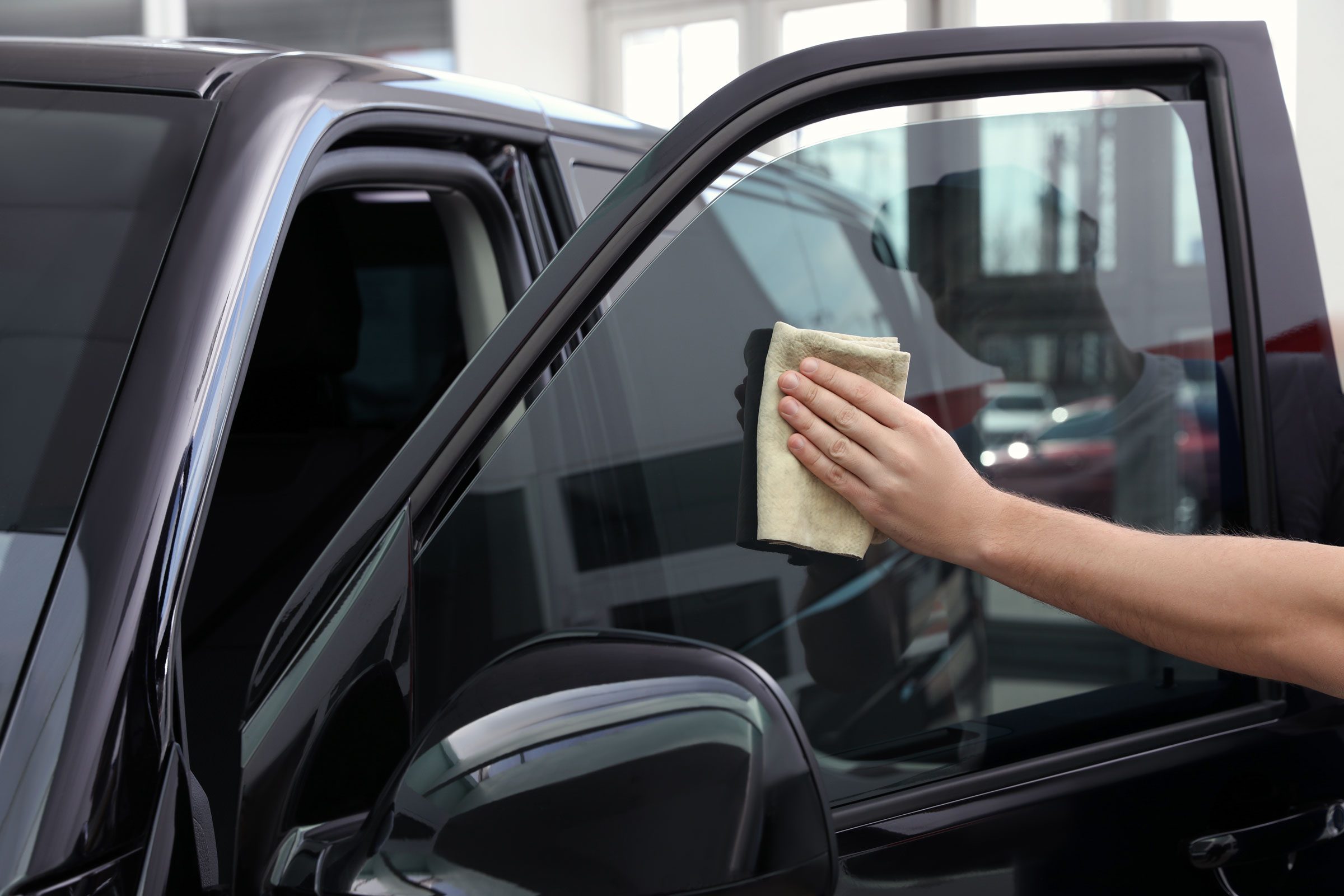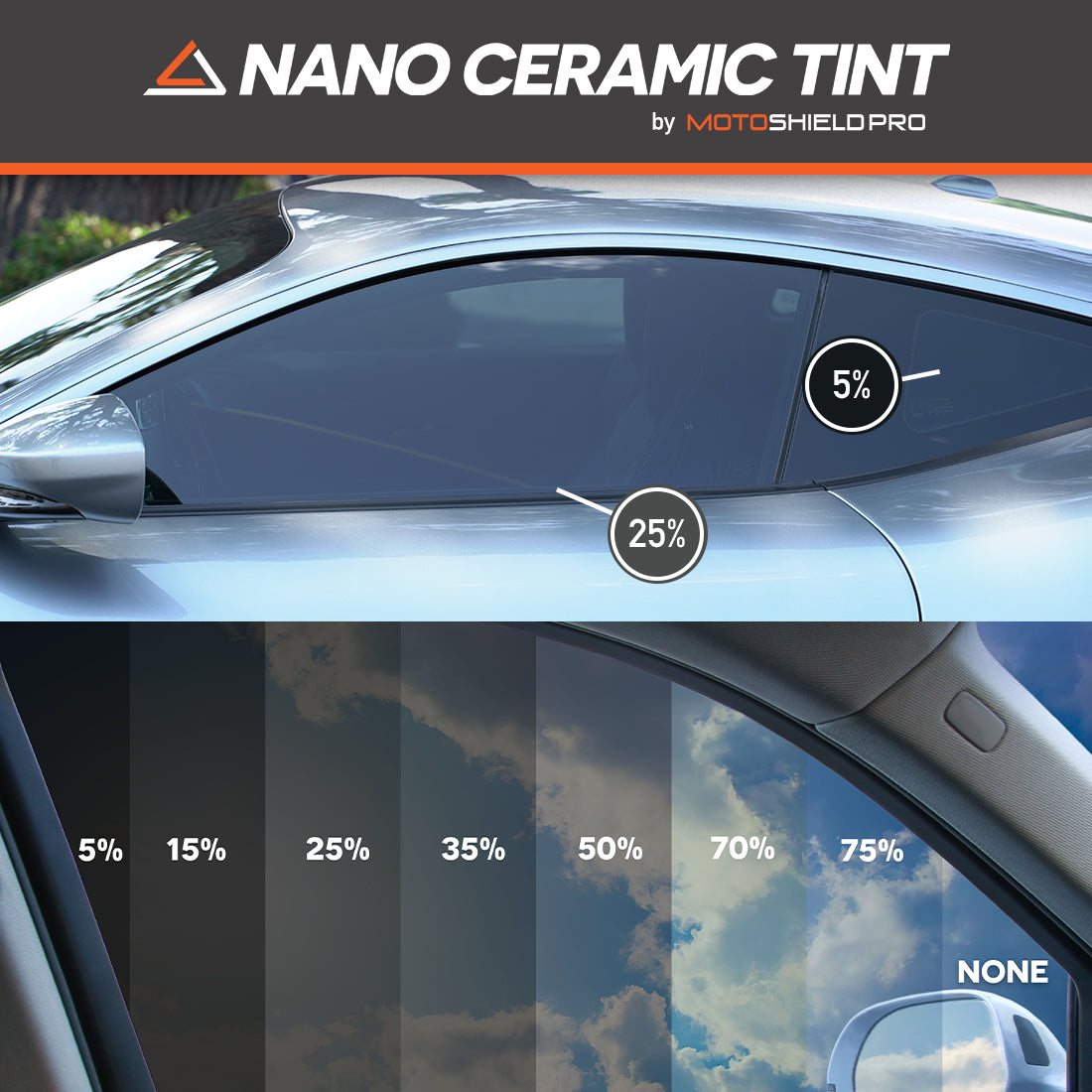How Window Tinting Can Reduce Glare and Improve Road Safety
How Window Tinting Can Reduce Glare and Improve Road Safety
Blog Article
Window Tinting Options: Discover the Right Shade for Your Design and Requirements
Choosing the suitable window tint for your lorry includes a careful factor to consider of various factors, consisting of individual looks, practical requirements, and legal constraints. With choices ranging from light tintss that supply marginal privacy to darker tones that improve privacy, the selections can be overwhelming.
Understanding Window Tinting Degrees
When considering window tinting, it is necessary to comprehend the various degrees of tint readily available, as they dramatically impact both aesthetics and capability. Window tinting is classified based on Noticeable Light Transmission (VLT) percentages, which suggest the quantity of light enabled to travel through the glass. The VLT portion can vary from very light (over 70%) to really dark (below 5%)
The key degrees of tint include clear, which supplies UV protection without altering presence; light tint (over 50% VLT), which somewhat reduces glow while keeping visibility; tool tint (around 35% VLT), striking an equilibrium in between personal privacy and light transmission; and dark tint (below 20% VLT), supplying substantial privacy and warm decrease yet restricting outward visibility.
Comprehending these degrees is essential as they can affect driving security, lawful conformity, and individual comfort. Additionally, local policies commonly determine permitted tint degrees, varying by state or town. For that reason, before selecting a tint, it is recommended to research study and guarantee adherence to these guidelines while taking into consideration individual preferences for style and useful advantages.
Popular Tint Tone Explained

One of the most prominent alternatives is the classic dark tint, typically varying from 20% to 5% VLT (Visible Light Transmission) This shade supplies maximum privacy and a smooth, innovative look. It successfully obstructs UV rays and heat, making it optimal for bright environments, though it may limit exposure at evening.
Conversely, lighter shades such as 35% or 50% VLT offer an extra refined look while still offering some degree of privacy. These shades are best for those looking for an equilibrium between aesthetic appeals and capability, as they enable better visibility and abide by different legal requirements.
One more arising choice is the ceramic tint, which can can be found in a selection of tones - window tinting. It supplies superior warm being rejected and UV security without dramatically modifying the lorry's look

Lawful Regulations for Window Tinting
Understanding the lawful laws surrounding window tinting is vital for automobile owners seeking to personalize their cars. Each state in the U.S. has details laws regulating the darkness or agility of window tintss, commonly measured by Visible Light Transmission (VLT) portion. VLT describes the quantity of light that can pass through the movie and the glass combined.
In lots of states, regulations dictate different VLT portions for numerous windowss, including front windshields, side windowss, and back windowss. For example, some states might enable a color of 70% VLT for windscreens while allowing darker tintss for rear windowss. Furthermore, particular states have constraints on reflective tintss, which can create glare for other motorists.
Failing to abide by these laws can bring about penalties, mandated elimination of the tint, and increased insurance premiums. Car owners ought to speak with regional legislations or state DMV web sites to ensure they are within legal limitations before waging installation. Understanding these regulations not only helps stay clear of lawful effects yet additionally makes certain a secure driving experience.
Advantages of Different Tint Products
Discovering the advantages of different tint products discloses significant advantages that can enhance both the capability and aesthetic allure of a lorry. Each product uses distinctive features matched to particular requirements and preferences.
Dyeded window films are prominent for their cost and capacity to decrease glare. They efficiently block UV rays, protecting the interior from fading, though they best site may not provide the highest possible warm being rejected. Metalized films, on the various other hand, offer premium warm reduction and UV defense because of their reflective residential or commercial properties. They can boost personal privacy and safety and security but might hinder digital signals.
Ceramic window films represent a costs option, supplying extraordinary heat being rejected while keeping exposure. They are non-metallic, hence avoiding any kind of signal disruption, and are extremely sturdy, withstanding scrapes and fading in time. In addition, ceramic films do not consist of dyes, ensuring a longer-lasting appearance.
Last but not least, hybrid films incorporate elements from dyeded and metalized alternatives, providing a well balanced performance in terms of heat rejection, glow reduction, and expense. Each tint material serves one-of-a-kind functions, permitting car proprietors to pick the finest suitable for their lifestyle and aesthetic choices, ultimately improving their driving experience.
Picking the Right Tint for You
Finding the right window tint includes taking into consideration various aspects, consisting of personal preferences, automobile kind, and local policies. Initially, examine your individual design and desired level of privacy, as these will assist your option of tint shade. Darker tintss give enhanced personal privacy but might her comment is here not be appropriate for all motorists, especially those who like a more open feel inside their car.
Next, consider your vehicle kind, as the dimension and form of windowss can influence the effectiveness of certain tintss. For circumstances, bigger windowss may gain from reflective tintss that lower glow while smaller sized windowss could be more matched to dyeded films that offer refined aesthetics.
In addition, it's vital to inspect neighborhood guidelines concerning window tinting. Numerous states enforce limitations on the allowable darkness and reflectivity, especially for front windowss. Conformity with these laws is vital to guarantee and stay clear of fines safety and security.
Lastly, evaluate the tint product that best matches your needs. Choices consist of dyeded, metalized, ceramic, and hybrid films, each offering unique advantages connecting to warm denial, UV security, and longevity. By thinking about these aspects, you can confidently select a home window tint that aligns with your style and practical demands.
Final Thought
To conclude, picking the proper window tint calls for careful factor to consider of different variables, consisting of VLT portions, neighborhood laws, and the weblink desired visual. Different tint products provide one-of-a-kind advantages that can improve car comfort and security. By completely comprehending the offered options and aligning them with individual preferences and functional needs, one can attain an optimum balance between style and functionality in window tinting choices.
Picking the appropriate window tint for your car includes a careful factor to consider of different factors, including personal appearances, functional needs, and lawful restrictions. Each state in the U.S. has specific laws controling the darkness or agility of window tintss, typically gauged by Visible Light Transmission (VLT) percent. Some states may permit a color of 70% VLT for windscreens while permitting darker tintss for rear windowss.Locating the right window tint involves considering numerous variables, consisting of personal preferences, lorry kind, and regional policies.In conclusion, picking the proper window tint calls for cautious consideration of numerous aspects, including VLT percentages, neighborhood guidelines, and the desired visual.
Report this page